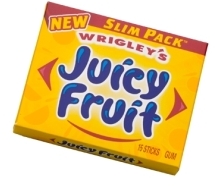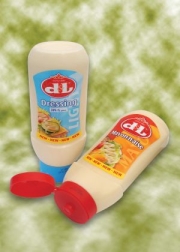Tyson removes antibiotic-free labeling
Private label sales growth due to price hikes: report
Cooper: EU must reform agricultural policy
Wrigley rolls out 15-stick gum pack
Belgian mayo stands on head

by Pan Demetrakakes
Executive Editor
Consumers are sorely in need of reliable information about healthy eating, according to surveys from both the federal government and industry groups.
A Food and Drug Administration (FDA) report on consumer attitudes and practices toward nutrition revealed that-surprise!-consumers tend to talk a better game than they play. In the FDA’s “Health and Diet Survey,” done in conjunction with the Office of Disease Prevention and Health Promotion, 95% of respondents said “healthy eating habits are very important” and 90% said they were “actively trying to eat a healthy diet.”
However, based on responses to questions about food intake, such as consumption of whole grains and vegetables and avoidance of fat and sodium, the report concluded that consumers exhibited “mixed adherence to attitudes and intentions” about nutrition. The report also stated that awareness of food-related health issues increased with age and education levels.
The International Food Information Council’s third annual Food & Health Survey found several of what it called “diet disconnects” among respondents. For instance, more than 91% expressed concern about trans fats, but 60% didn’t realize that unsaturated fats are the healthiest kind. With regard to food safety, less than half (48%) reported using separate cutting boards for raw meat or poultry and produce, and just 29% said they use a meat thermometer.
“Americans want information, but they don’t know what to do with the information once they get it,” IFIC president Susan Borra toldSupermarket News.
One of the basic problems is that Nutrition Facts label panel, as currently constituted, is confusing, with a dozen or more lines of information and serving sizes that often bear little relation to actual consumption. If the FDA is serious about getting clear, easy-to-understand information to consumers, it may want to consider a simpler system-one that assigns a single number, or a symbol like the Traffic Light system used on some foods in the United Kingdom.
TOP DEVELOPMENTS
Tyson removes antibiotic-free labelingAfter a court order to remove all “antibiotic-free” advertisements relating to its chicken, Tyson has also been forced to withdraw the phrase “raised without antibiotics” from its chicken labeling. Since the Food and Drug Administration classifies ionophores (antimicrobials used in Tyson’s chicken feed) as antibiotics, Tyson had to remove the wording from its label to maintain FDA approval. The USDA is being asked to conduct public hearings on the topic, or establish a rule-making process.
Private label sales growth due to price hikes: report
Sales of private label foods have been growing faster than national brands, but that is due to price hikes driven by rising commodity prices, not from consumers abandoning national brands, according to a Nielsen study. Rising fuel and corn prices are contributing to rising store prices. Private label popularity varies across the country, with the highest being San Antonio at 25.6% and the lowest being New York City at 11.2%. The top-selling private label foods are eggs, milk and cheese products, while the top private label non-food products are paper towels and plates, toilet paper and aluminum foil.
Cooper: EU must reform agricultural policy
The European Union’s (EU) Common Agricultural Policy is in need of reform, says UK Treasury minister Yvette Cooper. According to Cooper, while the EU has already agreed to suspend import duties on cereals, a wider range of products needs to be made tariff-free to bring food prices down. Cooper estimated that current EU food tariffs cost consumers more than €40 billion ($62.39 billion). Countries are currently working on proposals for an international trade deal to solve the problem.

NEW PACKAGES
Wrigley rolls out 15-stick gum packWm. Wrigley Jr. Co. is bringing out new, slim-line, 15-stick packaging for the brands that constitute 30% of its U.S. gum business. The Slim Pack for Doublemint, Spearmint, Juicy Fruit, Big Red, Winterfresh and Extra brands, unveiled at the recent All Candy Expo, coincide with formulation improvements. The Slim Pack is similar in dimensions to the “5” gum pack the company introduced last year.

A brand of mayonnaise marketed by Campbell Soup Co. in Belgium is now being packaged in a multi-layer inverted bottle. Devos Lemmens, Belgium’s leading mayonnaise brand, had previously been available only in glass. The blow-molded bottle, fromRPC Kerkrade, has outer and inner layers of polypropylene and a middle layer of ethylene vinyl alcohol.
